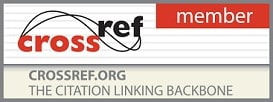Vol. 9, Issue 6, Part A (2025)
Integration of GIS and remote sensing with RUSLE model for estimation of soil erosion
Reshma B Kadlag, Komal G Rokade and Virendra N Barai
Soil erosion, a major environmental hazard caused mostly by natural forces but exacerbated by human activities, requires appropriate management measures. Soil erosion in the Upper Krishna subbasin, Maharashtra state, India, which encompasses 5422.20 km2, was examined utilizing a rigorous methodology that includes the RUSLE (Revised Universal Soil Loss Equation), Remote Sensing data, and GIS (Geographic Information System) technologies. The spatial variation of annual soil loss erosion was determined by combining raster-derived parameters in a GIS environment. Using ArcGIS 10.3.1, thematic layers were created, including maps of the rainfall erosivity factor, soil erodibility factor, slope length and steepness factor, cover and management factor, and support and conservation practice factor. The analysis further reveals that the Upper Krishna sub-basin experiences an annual average soil loss of approximately 23,663 tons for total watershed area, as per the RUSLE model. In comparison to other areas, the western portion of the study area was projected to have higher annual soil erosion, ranging from 100 t/ha/yr to 200 t/ha/yr. Because of the higher slope and significant rainfall, the western hill portion of the basin was also anticipated to have very high annual soil erosion (>200 t/ha/yr). The eastern and central portions of the research area, which include the majority of the agricultural land, were assessed to have low to low annual soil erosion (0 to 50 t/ha/yr).
Pages: 29-36 | 430 Views 128 Downloads






